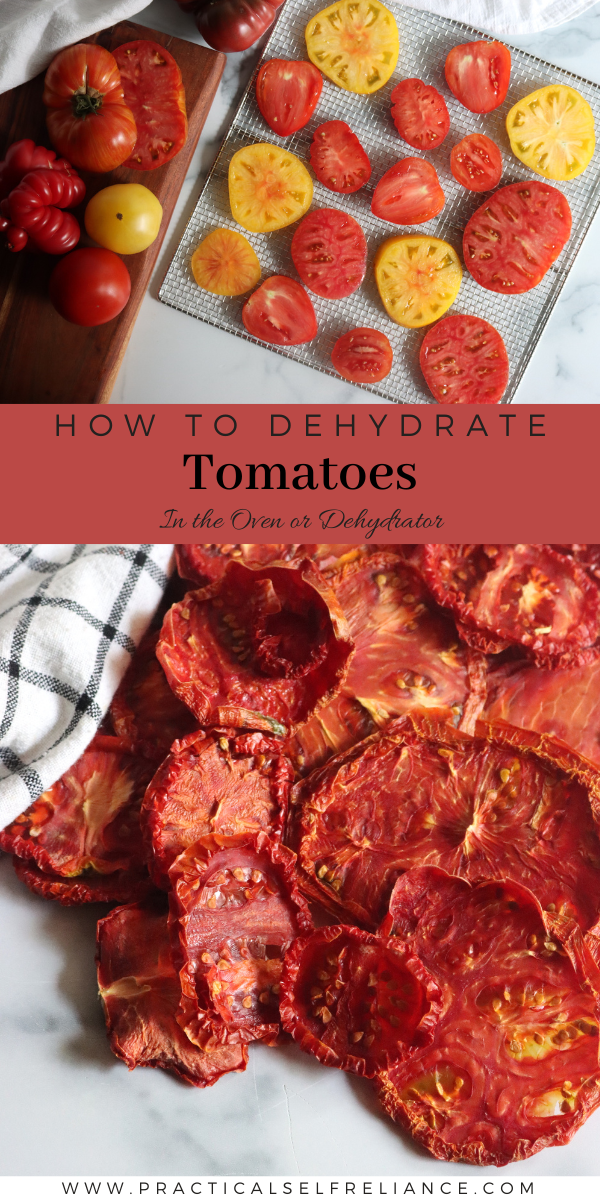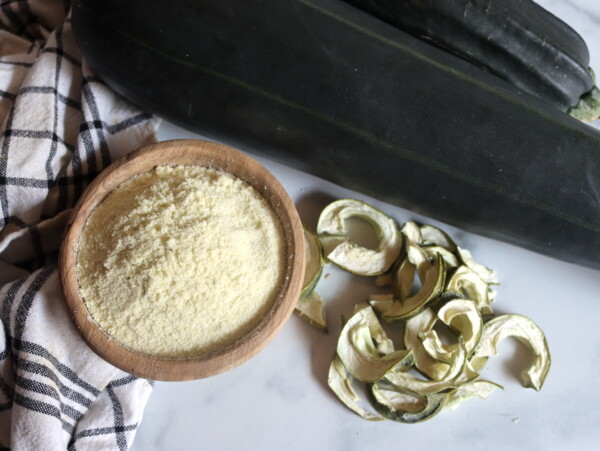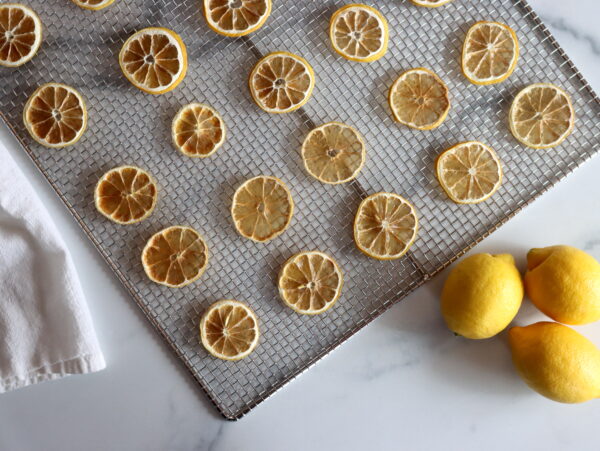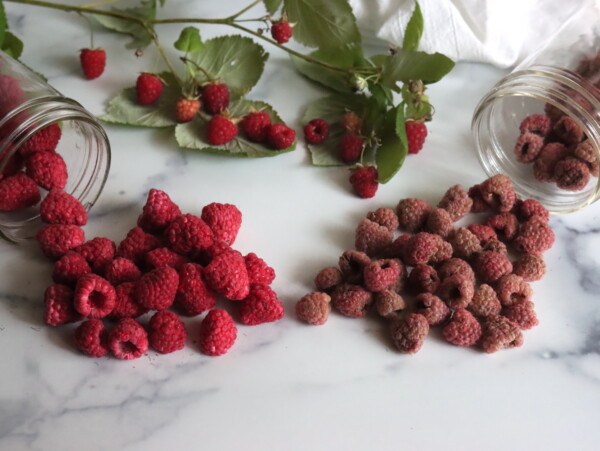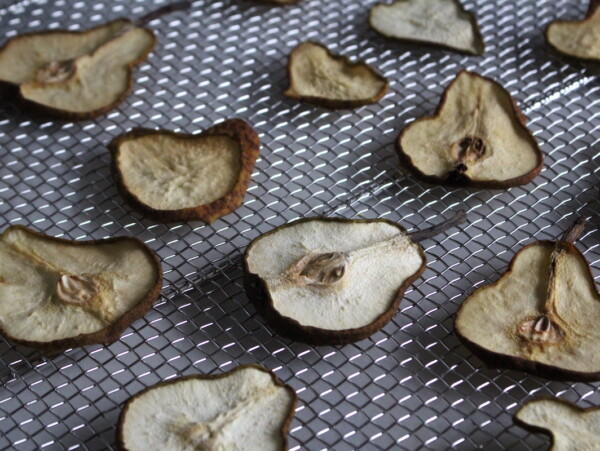Affiliate disclosure: This post may contain affiliate links. Please see our Privacy Policy.
Drying tomatoes at home is a simple way to preserve tomatoes for pantry storage. Add dehydrated tomatoes to pizza, sandwiches, soups, sauces, chili and more!
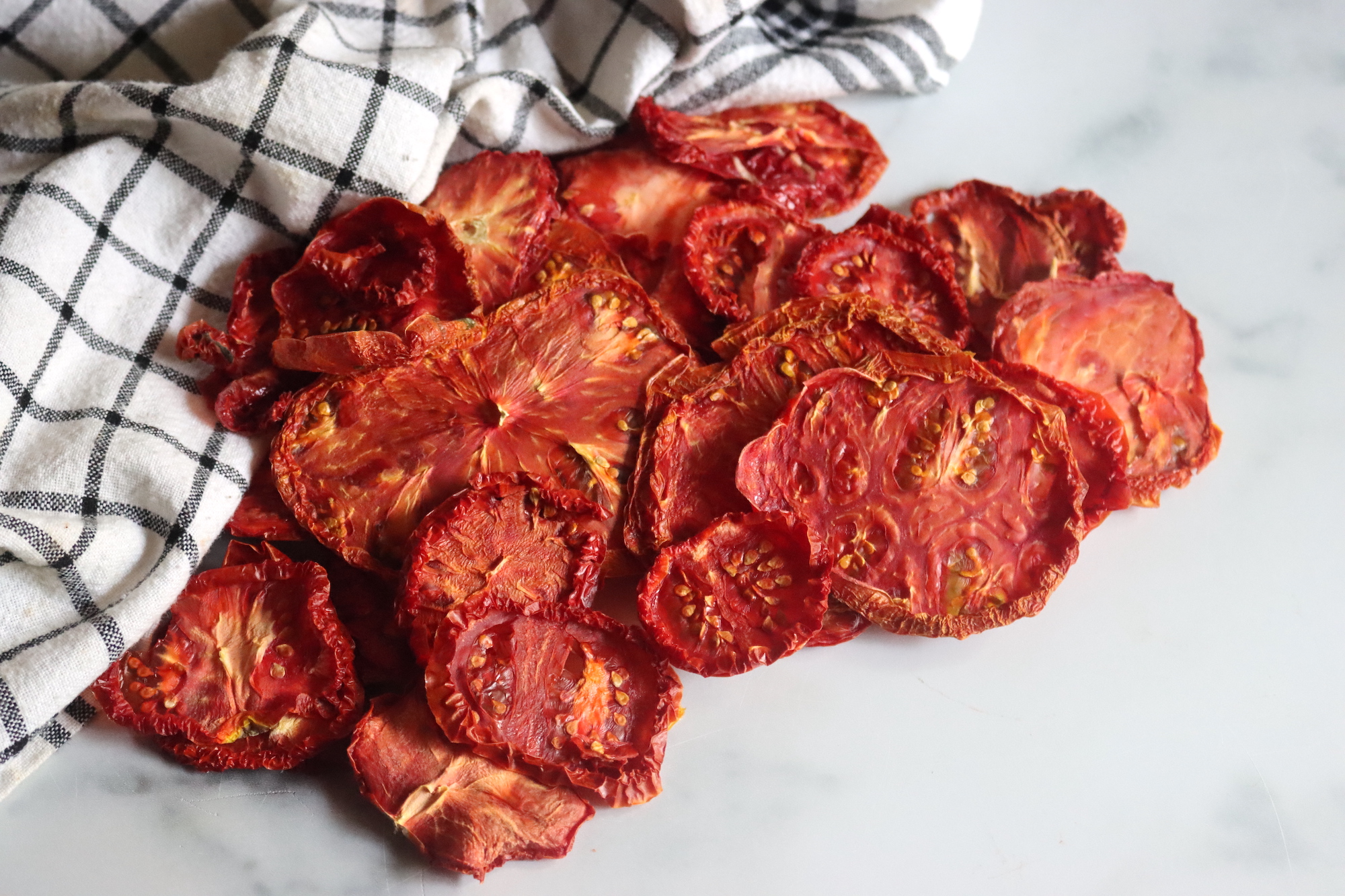
Table of Contents
- Best Tomatoes for Dehydrating
- Preparing Tomatoes for Drying
- Temperature for Drying Tomatoes
- How Long to Dehydrate Tomatoes?
- How to Dehydrate Tomatoes in a Dehydrator
- How to Dehydrate Tomatoes in the Oven
- Fresh to Dried Yield
- Ways to Use Dried Tomatoes
- Dehydrating Tomatoes Recipe
- Ways to Preserve Tomatoes
- Dehydrator Recipes
Best Tomatoes for Dehydrating
Although there are many varieties of tomatoes good for juicing, roasting, or making sauce, a few particular characteristics make some tomatoes better than others for drying.
The best tomatoes for dehydrating tend to be high-acid varieties, as low-acid varieties can turn black when dehydrated. Less watery varieties are also desirable for dehydrating, as they will take less time to dry.
Choose tomatoes that are dark red with thick and fleshy walls for dehydrating. Some flavorful tomato varieties good for drying include:
- Royal Chico
- San Marzano
- Other plum or Roma tomatoes
Although reported to have lower acid content than other tomatoes, San Marzano tomatoes are prized for their thick walls, more intense flavors, and lack of seeds. They also possess a lower moisture content and more balanced flavor than other more acidic varieties.
Like Roma tomatoes, San Marzanos are also plum tomatoes. Most plum tomatoes have a lower water content as well.
Royal Chico tomatoes are another plum tomato with meaty flesh and lend themselves particularly well to preserving, be it through drying or canning.
Know that both Globe and Beefsteak tomatoes tend to have juicier flesh and higher water content. These varieties will take longer to dry than others.
Tomatoes are usually in season sometime from May through October in the U.S. depending on where you reside. You can check the peak tomato season in your state here: seasonalfoodguide.org.
Pick tomatoes that are heavy and aromatic with an earthy, tomato-like smell. Avoid tomatoes with bruised or torn skin, but know that some scarring is normal on heirloom tomatoes.
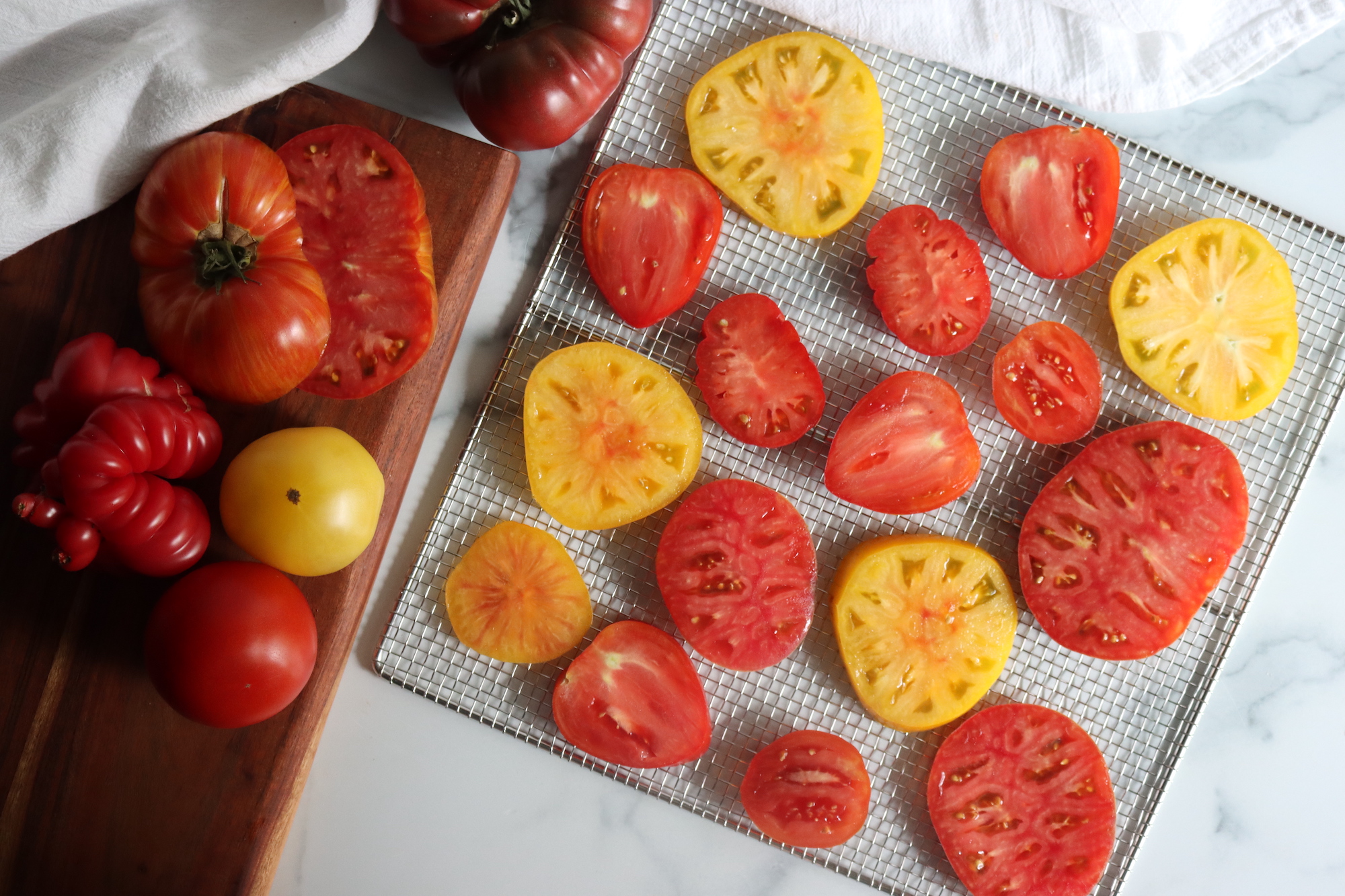
Preparing Tomatoes for Drying
Prepare your tomatoes for drying by giving them a quick wash and patting them dry. Remove the stems and the skins.
A good way to remove tomato skins is to dip tomatoes in boiling water, and then immediately dip them in cold water. After doing so, the skins should simply slip off.
If desired, you can also leave the skins on. Some find doing so is less messy. At the end of the day, it’s really a matter of personal preference.
Cut larger tomato varieties into slices ¼ inch thick. Cherry and grape tomatoes should be halved.
If trying to dry a particularly low-acid variety of tomato, you can puree the tomatoes in a blender, adding 1 tablespoon of either lemon juice or vinegar to each quart.
No pretreatment is needed for tomatoes.
If worried about retaining color, you can add a splash of lemon juice to a bowl of water and submerge your tomato slices in it for 3 to 4 minutes to help preserve color.
Temperature for Drying Tomatoes
Tomatoes are preferably dried at a temperature close to 145°F (63°C). This is a temperature low enough that tomatoes are preserved rather than cooked, ensuring the fruits retain most of their flavors, yet high enough that they are dried before spoiling occurs.
Many of the nicer home dehydrators allow you to specify the temperature at which you’d like to dry your food. This is because different food items are best dried at different temperatures. Herbs require some of the lowest temperatures — about 105°F; jerky requires some of the highest — about 155°F.
Fruits and vegetables are usually dried between 115°F and 135°F, although some like tomatoes and onions are recommended to be dried at higher temps.
Excalibur is a distinguished dehydrator that offers adjustable temperature and timer settings. Excalibur dehydrators are a long-standing brand in the dehydrator community, and they’re truly worth every penny. Cosori dehydrators are nice as well. A bit newer to the dehydrating game, Cosori dehydrators have become quite popular with their modern stainless steel look and especially quiet operation.
Many economy dehydrators, like this stacking Nesco dehydrator, operate at a nonadjustable temperature (usually around 160°F to 170°F). This high temperature is fine for jerky-making, but for dehydrating fruits and vegetables or preserving herbs with delicate aromatics, it’s much higher than desired.
Oven drying poses similar problems. Many home ovens cannot be set below 170°F for food safety reasons. Although this temperature will effectively dry tomatoes, it will do so at the cost of some of their flavor and nutrients.
If an oven is all you have for dehydration at the moment, I highly recommend you use racks over baking sheets to help with airflow. These stainless steel oven-safe racks with trays underneath are incredibly helpful for dehydrating, especially jerky.
How Long to Dehydrate Tomatoes?
The time in which it takes tomatoes to fully dehydrate can vary based on the variety, but as a general outline, it will take tomatoes 5 to 9 hours to dehydrate in a dehydrator set to 145°F.
The actual time it takes will vary based on the type of tomato you choose to dry, its size, and its moisture content.
Larger tomatoes will take longer to dry than cherry and grape tomatoes. Those with a higher water content and juicier flesh will take longer to dry than more firm varieties. Even ambient humidity plays a part in dehydrating times.
The humidity of your location can extend drying times a good deal. Why is this? It’s plainly harder to remove moisture from food when there’s an abundance of it in the air. As a result, those dehydrating tomatoes in arid states may have substantially shorter drying times than those dehydrating in muggier ones.
So what is one to do? Luckily, Excalibur has recommended dehydrating times based on ambient humidity. For tomatoes, the recommendations are as follows:
- 10 to 30% Humidity: 5 Hours
- 31 to 50% Humidity: 6 Hours
- 51 to 70% Humidity: 7 Hours
- 71 to 80% Humidity: 8 Hours
- Above 80% Humidity: 9 Hours
Tomatoes should be dried until they are leathery and brittle.
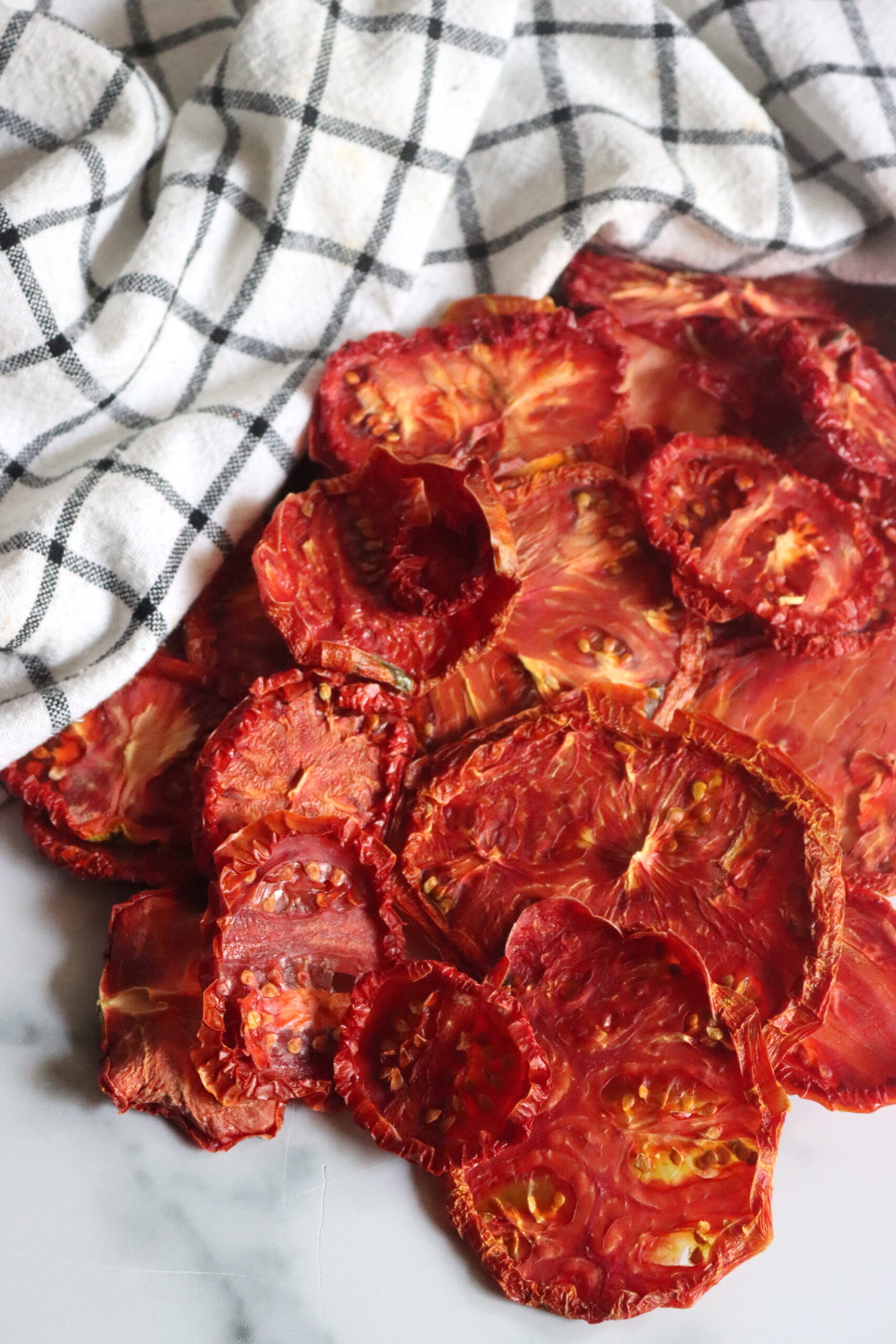
How to Dehydrate Tomatoes in a Dehydrator
To dry tomatoes in a dehydrator, set the temperature to 145°F. Organize tomato slices on your dehydrator trays in a single layer, leaving room between the slices for decent airflow.
If dehydrating tomato puree, line your trays with parchment paper or silicone dehydrator sheets like Paraflexx before pouring the mixture.
Dry tomatoes for 5 to 9 hours, adjusting for humidity. When finished, your tomatoes should be brittle and leathery. When broken apart, no signs of moisture should be present.
How to Dehydrate Tomatoes in the Oven
You’ll find a lot of recipes out there for oven-roasted tomatoes, but when preservation is the goal, the process is somewhat different.
You don’t get the exact same quality when dehydrating tomatoes in an oven as you will with a dehydrator. Oven temps usually cannot be set as low, and so your foods will often have to be dehydrated at a higher temperature than is desired. This will result in some flavor and nutrient loss, although it will get the job done.
Some ovens are better than others for dehydrating. If yours has a convection fan that will be incredibly helpful. Likewise, if your oven can be set lower than 170°F, you’ll be in pretty decent shape.
Dehydrating at temperatures higher than this will result in shorter drying times and more frequent checking to ensure you don’t scorch your tomatoes.
Either way, no matter the temperature at which you dehydrate your tomatoes, you should always use wire dehydrator racks on top of baking sheets for oven-dehydrating. These allow for airflow all around your tomato slices as you dry, lessening the need for flipping.
Be sure your wire racks are oven-safe. These stainless steel racks and sheets are a great choice for dehydrating.
To dehydrate tomatoes in the oven, arrange your slices on the wire racks and set your oven as close to 145°F as it will allow. Dehydrate the slices until they are brittle and leathery.
Cooking time will vary based on several factors like oven temperature and tomato variety. One cook found ¾ inch thick tomatoes to take 5 to 8 hours in an oven set between 140°F to 170°F. Another homesteader reported 8 to 12 hours for oven-baked tomatoes dried at 140°F.
Tomatoes can also be dried at higher temps as well. Smaller cherry tomatoes and plum tomatoes oven-dried at 250°F took between 2 to 3 hours.
Either way, when dehydrating tomatoes in the oven, you may wish to prop the door of your oven open with the handle of a wooden spoon to allow excess moisture to escape. Watch for pets and children and be sure to run your hood vent fan as well to assist with airflow.
Pay attention to your tomatoes especially towards the end of the cooking time to prevent scorching. Trays may need to be rotated as well to promote even drying.
Fresh to Dried Yield
Tomatoes are one of those fruits and vegetables that experience substantial weight reduction when dehydrated. Raw red tomatoes have a water content of about 95%. In dehydration, you preserve your food by reducing this water content to right around 10%.
14 pounds of fresh tomatoes will dehydrate down to a weight of just half a pound, filling between 2-½ to 3 pints. This results in a loss of weight and mass in your dried end product, making it easier to pack and store a large amount of tomatoes for future recipes.
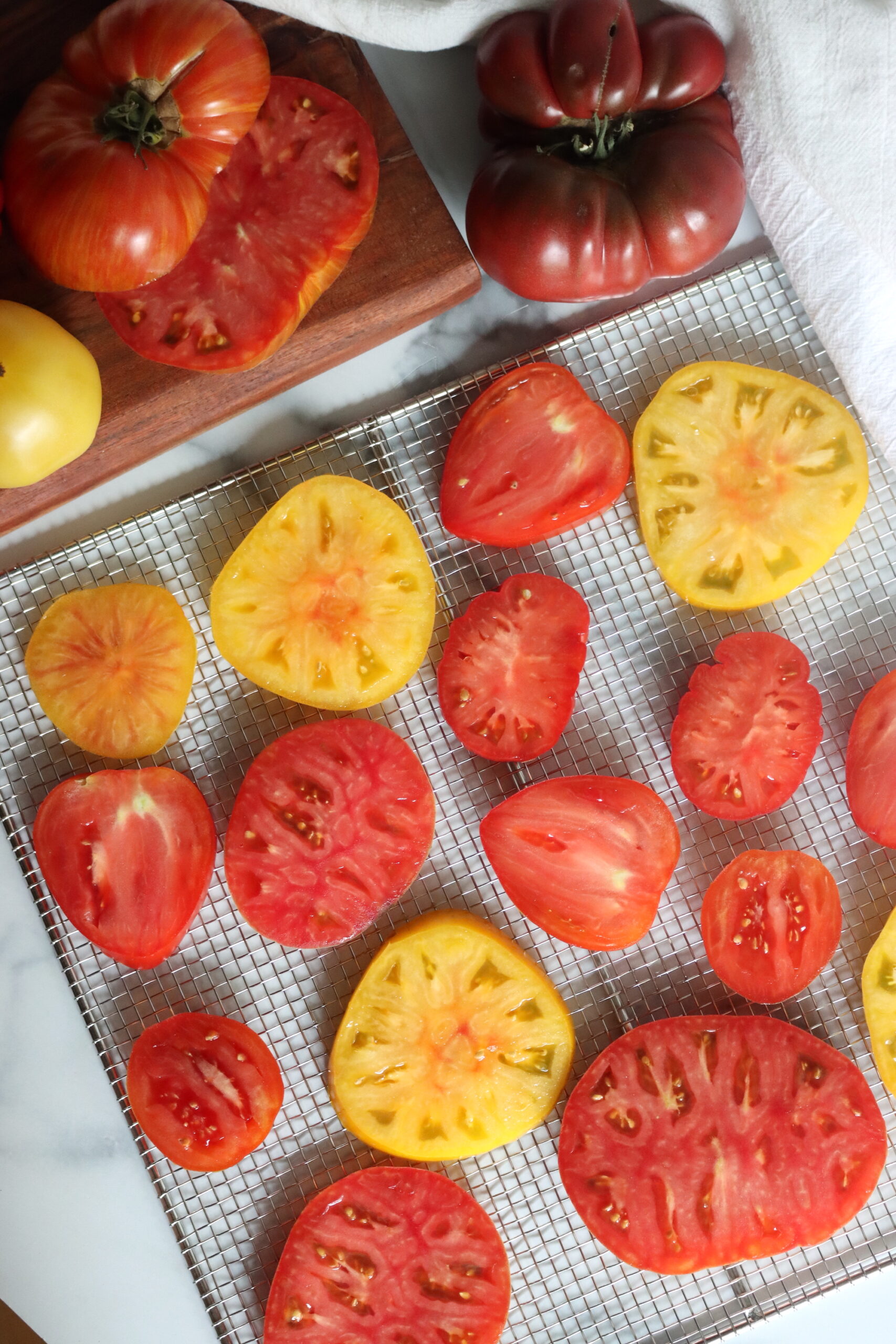
Ways to Use Dried Tomatoes
Dried tomatoes will add intense flavor and taste to an expansive amount of dishes.
Dehydrated tomatoes are often added to recipes dry as they rehydrate quickly and reconstitute using the moisture from other ingredients. Try adding dried tomatoes to your next homemade pizza or plopping a few in a grilled cheese for some chewy tomato flavor.
Steep dried tomatoes with freshly blended ones for a tomato soup that’s intensely rich. Add dried tomatoes to stews, chilis, and casseroles as well. Dehydrated tomatoes can even be crumbled and sprinkled on breakfast dishes like scrambled eggs, omelets, or frittatas.
If you prefer your tomatoes added to recipes soft, you can rehydrate them like any other dried food. Soak dried tomatoes in warm water or a little olive oil for just 10 minutes to see them plump back up.
Dried tomatoes can also be pulsed into a tomato powder for making tomato paste or utilized as a seasoning in spice rubs to lend foods a tomato flavor.
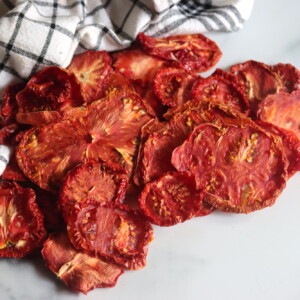
Dehydrating Tomatoes
Ingredients
- 14 pounds of tomatoes, to yield 1/2 pound dried
Instructions
- Wash tomatoes and remove stems.
- If desired, skin tomatoes by dipping them in boiling water, then in cold water. Skins should immediately slip off. (Optional)
- Cut larger tomatoes into slices ¼ inch thick. Grape and cherry tomatoes should be halved. Less acidic tomatoes can be pureed with lemon juice or vinegar (1 tbsp per quart).
- Place tomato slices in a single layer on dehydrator trays. If dehydrating tomato puree, line trays with parchment paper or silicone dehydrator sheets before pouring out the mixture.
- (Dehydrator) Set dehydrator to 145°F and dehydrate for 5 to 9 hours adjusting for humidity, moisture content, and tomato size.
- (Oven) Set oven as close to 145°F as it will allow. Dehydrate tomatoes until they are brittle and leathery. Time will vary based on tomato size and oven temp. Tomatoes dried at 250°F will take 2 to 3 hours; those dried between 140°F and 170°F can take 5 to 8 hours or longer.
Notes
Conditioning
To be entirely sure your tomatoes are dry enough, you may wish to condition them. To condition tomatoes, fill an airtight container loosely with your dried tomatoes. For 7 to 10 days, shake or stir the continents of the container once a day. If you see moisture appear, like beading or condensation, you must dehydrate tomatoes longer and repeat the conditioning process once more. Seeing no moisture after 10 days? Your dried tomatoes are good to go for long-term storage.Yield
14 pounds of fresh tomatoes will weigh just half a pound once dry. This should fill between 2-½ to 3 pint jars.Dehydrating Time
Current humidity levels can affect drying time. Refer to this chart for tomatoes when adjusting drying time for ambient humidity:- 10 to 30% Humidity: 5 Hours
- 31 to 50% Humidity: 6 Hours
- 51 to 70% Humidity: 7 Hours
- 71 to 80% Humidity: 8 Hours
- Above 80% Humidity: 9 Hours
Ways to Preserve Tomatoes
Dehydration isn’t the only way to preserve vibrant tomatoes. There exist a variety of canning recipes as well.
- Canning Tomatoes (Whole or Halves)
- Canning Diced or Crushed Tomatoes
- Canning Spaghetti Sauce (Basic Recipe Without Meat)
- Canning Tikka Masala Simmer Sauce
- Canning Chili Con Carne
- Corn Salsa Recipe for Canning
Dehydrator Recipes
Looking for more dehydrator recipes?
